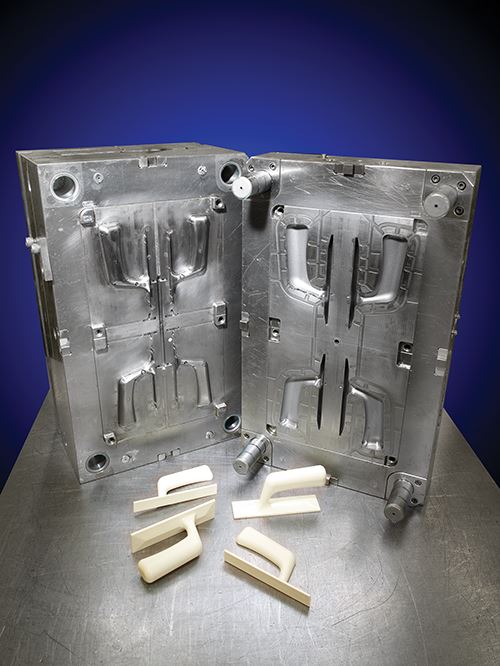A Low-Maintenance Approach to Mold Care
Molds are subjected to a variety of strains during the molding process. For them to function as they were designed to and consistently produce quality parts, a regular schedule of maintenance is required.
Molds are subjected to a variety of strains during the molding process. For them to function as they were designed to and consistently produce quality parts, a regular schedule of maintenance is required. In fact, part quality is a great indicator of whether or not a mold is being adequately maintained. Part dimensions will tell you if there is some level of wear or damage to the mold.
Certain checks and procedures should be performed as part of the regular maintenance of any mold, as well as before the mold is placed into storage. The first step is to remove the mold from the machine. All plates should be separated and examined for dings or burrs, and resurfaced as needed. Mold cavities and gating should be visually inspected for wear or damage. The ejector system also should be inspected and cleaned, along with any cam slides, leader pins, ejection pins, sleeves and bushings. Any of these parts that are worn or damaged should be repaired or replaced. Mold surfaces should be checked as well to ensure that production requirements are maintained. Surface features that have become worn or damaged should be repaired as needed, and all surfaces should be cleaned with a solvent to remove any dirt.
Once the mold and its component parts have been reviewed, repaired and resurfaced, and cleaned, a lubricant can be applied. Molds that are not made from hardened stainless steel should also have a mold-saver applied to prevent rust during storage. Although it could be time-consuming to complete all of this maintenance prior to putting a mold into storage, if it is done properly, the mold mechanisms should be able to be put back into service with minimal effort when the time comes.
Special attention should also be made to the mold’s cooling system. It should be checked for leaks and thoroughly cleaned and flushed. This includes checking for and drilling out calcium buildup, which can insulate the water lines and cause poor heat exchange. To prevent such buildup, water can be treated to keep minerals in suspension, so they don’t precipitate out and clog the lines. Prior to mold storage, all water lines should be flushed and drained to remove excess moisture.
The adage that a strong offense makes the best defense is also true in moldmaking. While maintenance must be done on a regular basis, the goal is to minimize the amount of required upkeep. High-quality molds that are regularly maintained can perform for decades.
Related Content
-
The Ins and Outs of Hot Runner Temperature Control
A training checklist that explains the why and how of proper hot runner temperature control and system management.
-
Hands-on Workshop Teaches Mold Maintenance Process
Intensive workshop teaches the process of mold maintenance to help put an end to the firefighting culture of many toolrooms.
-
MoldMaking Technology's Most-Viewed Content 2022: Products
MMT shares the five top-viewed technologies, equipment and services of 2022 in each Engineer, Build, Maintain and Manage tenet based on Google Analytics.

















